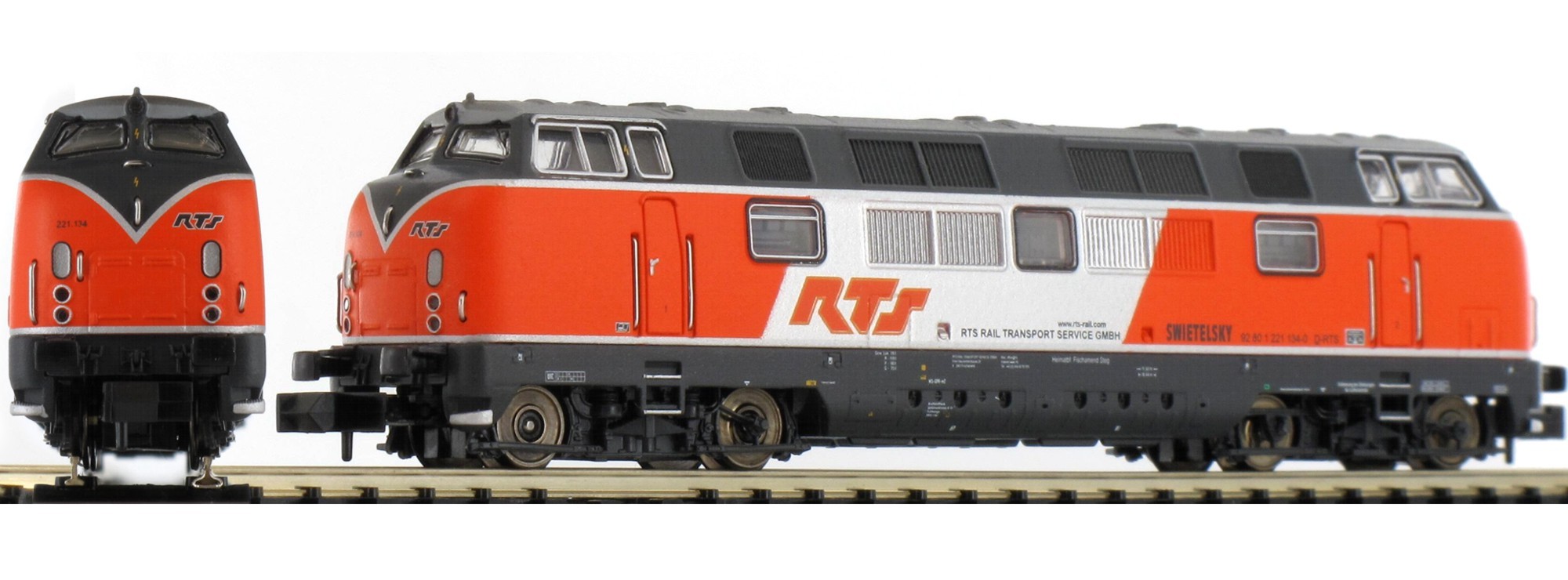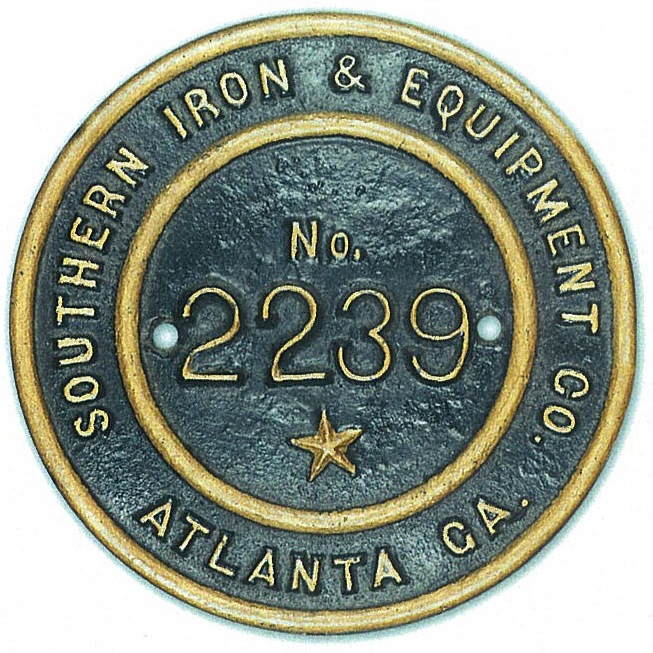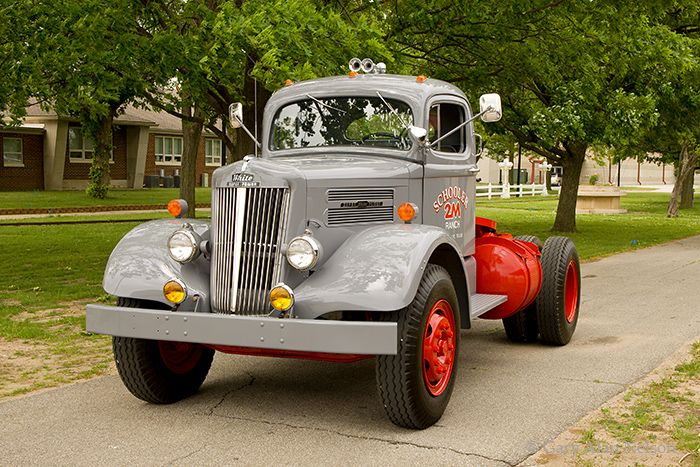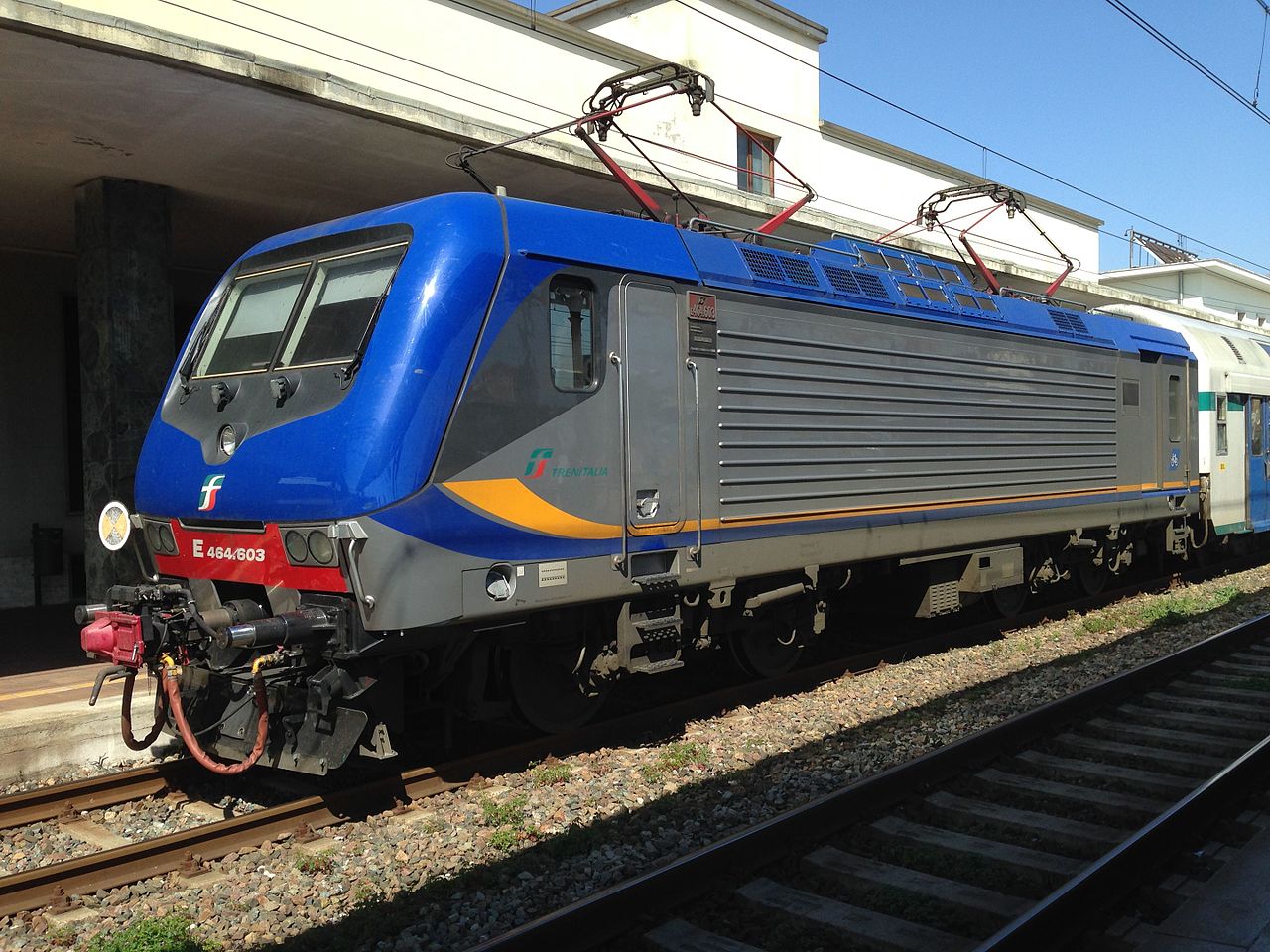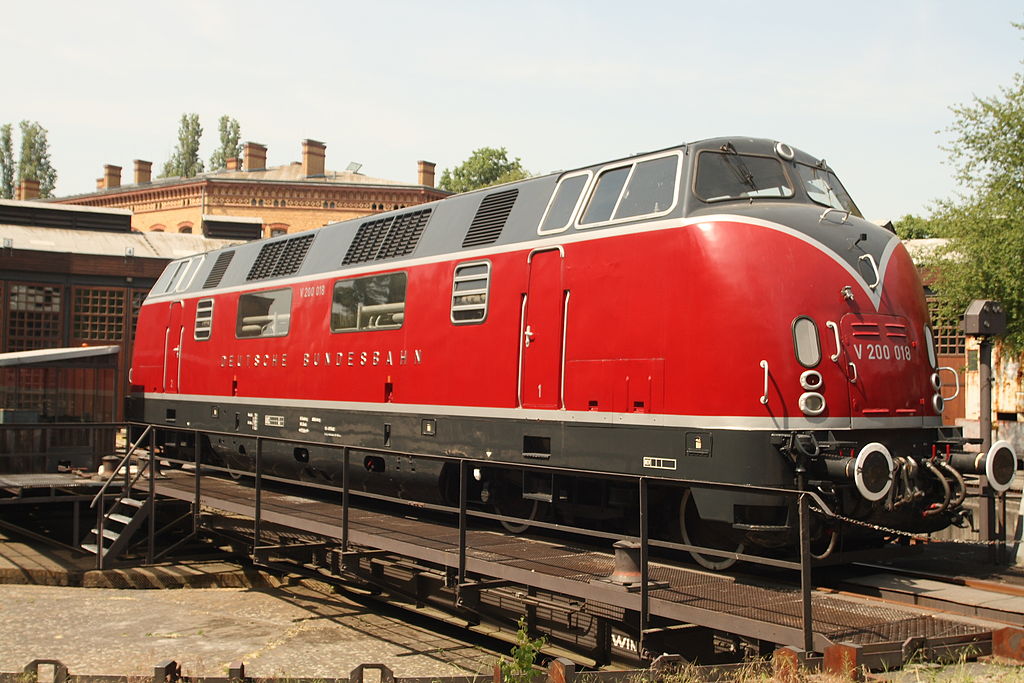Minitrix - 16202 - Locomotive, Diesel, DB V200 - RP Transfer - 221 134-0
| Stock Number | 16202 |
| Original Retail Price | 279.99€ |
| Brand | Minitrix |
| Manufacturer | Minitrix |
| Body Style | Minitrix Diesel Engine DB V200 |
| Prototype Vehicle | Locomotive, Diesel, DB V200 (Details) |
| Road or Company Name | RP Transfer (Details) |
| Road or Reporting Number | 221 134-0 |
| Paint Color(s) | Orange, White and Gray |
| Print Color(s) | Orange and Black |
| Coupler Type | Rapido Hook |
| Coupler Mount | Body-Mount |
| Wheel Type | Chemically Blackened Metal |
| Wheel Profile | Small Flange (Low Profile) |
| DCC Readiness | DC/DCC Dual Mode Decoder w/Sound |
| Release Date | 2015-01-01 |
| Item Category | Locomotives |
| Model Type | Diesel |
| Model Subtype | DB |
| Model Variety | V 221 |
| Prototype Region | Europe |
| Prototype Era | EU Epoch III (1945 - 1970) |
| Years Produced | 1956 - 1958 |
| Scale | 1/160 |
| Track Gauge | N standard |
Specific Item Information:
Prototype: Class 221 heavy general-purpose locomotive painted and lettered for RTS Rail Transport Service (former DB class V 200.1). Built starting in 1962.
Model: The frame and body are constructed of die-cast metal. The locomotive has a built-in digital decoder for operation with DCC, Selectrix, and Selectrix 2. The motor has a flywheel. 4 axles powered. Traction tires. The headlights and marker lights change over with the direction of travel. Warm white LEDs are used for the headlights. The locomotive has cab lighting that can be controlled in digital operation. It also has a close coupler mechanism. The locomotive also has separately applied grab irons. Length over the buffers 115 mm.
Model: The frame and body are constructed of die-cast metal. The locomotive has a built-in digital decoder for operation with DCC, Selectrix, and Selectrix 2. The motor has a flywheel. 4 axles powered. Traction tires. The headlights and marker lights change over with the direction of travel. Warm white LEDs are used for the headlights. The locomotive has cab lighting that can be controlled in digital operation. It also has a close coupler mechanism. The locomotive also has separately applied grab irons. Length over the buffers 115 mm.
Model Information:
Since 1967 the V200 has been available under the MPN 2960.
Prototype History:
DB Class V 200.0 (from 1968: Class 220) was the first series production diesel-hydraulic express locomotive of the German Deutsche Bundesbahn and - as Am 4/4 - of the SBB-CFF-FFS in Switzerland.
Initially the V 200 hauled express trains on all main lines, replacing the DRG Class 05, DRG Class 03 and DRG Class 01. Following the electrification of many main lines the V 200 was used increasingly for commuter trains and freight trains, but the Hamburg-Westerland, Hamburg-Lübeck-Copenhagen and Munich-Lindau lines still saw the V 200 hauling express trains.
From 1977, the V 200.0s were concentrated in northern German engine sheds (Bahnbetriebswerke). These two-engine locomotives were more expensive to operate than single-engine locomotives like DB Class V 160. A further disadvantage was its steam heating system for carriages, since replaced by electric train heating. The last V 200 went out of service with the DB in 1984.
Initially the V 200 hauled express trains on all main lines, replacing the DRG Class 05, DRG Class 03 and DRG Class 01. Following the electrification of many main lines the V 200 was used increasingly for commuter trains and freight trains, but the Hamburg-Westerland, Hamburg-Lübeck-Copenhagen and Munich-Lindau lines still saw the V 200 hauling express trains.
From 1977, the V 200.0s were concentrated in northern German engine sheds (Bahnbetriebswerke). These two-engine locomotives were more expensive to operate than single-engine locomotives like DB Class V 160. A further disadvantage was its steam heating system for carriages, since replaced by electric train heating. The last V 200 went out of service with the DB in 1984.
Brand/Importer Information:
Trix is a German company that originally made Trix metal construction sets. one of its co-founders was Stephan Bing, the son of the pioneer toy-maker industrialist Ignaz Bing. In 1935 the company began producing the electrically powered model trains that it became famous for, under the Trix Express label. Prior to the outbreak of World War II the Trix company produced a small range of fairly unrealistic AC powered three rail models running at 14 volts.
N gauge models under the Minitrix brand were made from the late 1960s mostly of European prototypes (German and British primarily). North American prototypes were also manufactured and marketed under the Aurora "Postage Stamp" brand; later these items were sold under the American Tortoise, Model Power and Con-Cor brands. Trix sometimes utilized North American consultants to aid in the design of this portion of the product line. The "Hornby Minitrix' brand was used in the 1980s for a short lived range of British outline models using the earlier product tooling.
Trix's owner in the 1980s and 1990s was Mangold, which went bankrupt in the late 1990s and Märklin purchased the assets in January 1997. In part, this purchase was a reflection of Märklin's need for added production capacity; Trix had been manufacturing certain items for Märklin in previous years. The purchase was also in response to the earlier purchase of the Karl Arnold company by the Italian company Rivarossi; Märklin were very keen to take over Trix market share in 2-rail H0 and especially Minitrix, until then Märklin had not marketed N gauge models. In 2003, Märklin introduced its first N gauge models under the well established Minitrix brand. A number Märklin H0 scale three-rail AC locomotives have also been introduced in two-rail DC versions under the Trix logo and many models are shared between the two brands.
From Wikipedia
N gauge models under the Minitrix brand were made from the late 1960s mostly of European prototypes (German and British primarily). North American prototypes were also manufactured and marketed under the Aurora "Postage Stamp" brand; later these items were sold under the American Tortoise, Model Power and Con-Cor brands. Trix sometimes utilized North American consultants to aid in the design of this portion of the product line. The "Hornby Minitrix' brand was used in the 1980s for a short lived range of British outline models using the earlier product tooling.
Trix's owner in the 1980s and 1990s was Mangold, which went bankrupt in the late 1990s and Märklin purchased the assets in January 1997. In part, this purchase was a reflection of Märklin's need for added production capacity; Trix had been manufacturing certain items for Märklin in previous years. The purchase was also in response to the earlier purchase of the Karl Arnold company by the Italian company Rivarossi; Märklin were very keen to take over Trix market share in 2-rail H0 and especially Minitrix, until then Märklin had not marketed N gauge models. In 2003, Märklin introduced its first N gauge models under the well established Minitrix brand. A number Märklin H0 scale three-rail AC locomotives have also been introduced in two-rail DC versions under the Trix logo and many models are shared between the two brands.
From Wikipedia
Item created by: gdm
on 2019-05-22 09:38:38
If you see errors or missing data in this entry, please feel free to log in and edit it. Anyone with a Gmail account can log in instantly.
If you see errors or missing data in this entry, please feel free to log in and edit it. Anyone with a Gmail account can log in instantly.


